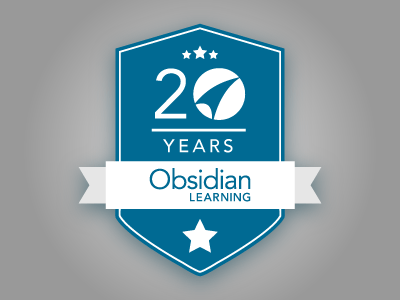As many of our past blog posts demonstrate, talent and creativity are a big part of what happens at Obsidian Learning. But as much as we are passionate about applying both to create effective learning experiences, we also understand that there must be a business case for choosing a learning company.
With close to two decades’ experience in the learning industry, we have learned a thing or two about the critical factors that any business or learning decision maker should consider when evaluating existing learning vendor or selecting a new learning company.
Communication
This is the single most crucial element for a successful project. Communication should be open, honest, and constructive. Creating learning experiences, whether learning videos, computer-based trainings, workshops, or learning hubs/dashboards can be a complex endeavor involving many people with a wide range of competencies. Your learning vendor should be capable of interacting with learning and development executives, subject matter experts, technical experts, and senior and junior staff.
Key questions to help you evaluate your existing learning vendor:
- Is all communication clear and concise?
- Does your vendor use management tools such as checklists, timelines, and/or project plans, and keep them up to date?
- Are you always clear on next steps and individual responsibilities?
- Has your vendor conveyed a specific learning philosophy (e.g. Obsidian’s Blended Learning model) that informs design strategies?
Efficient Use of Time
We understand that you, your team members, and your subject matter experts have full time jobs, and that spending long hours in meetings with your learning vendor may not be the most efficient use of your time. At Obsidian Learning we have perfected the art form of working with SMEs, which includes accommodating their travel, work, and personal commitments.
Key questions to help you evaluate your existing learning vendor:
- Is your development team bombarded with follow-up emails and additional requests from your learning provider?
- Has your learning provider established a good rapport with your SME?
- Do your SMEs have doubts about your learning provider’s ability to process highly technical subjects?
Smooth Progress
It is our responsibility to demonstrate how the learning will be effective, and also to ensure smooth project management. We provide a clear and concise roadmap for the training, and put in the upfront time to ensure that the development stage is not peppered with communication snags, timing delays, and review process snafus: these are the types of issues that good project prep can avoid entirely, leaving client project coordinators and SMEs free to pursue company business.
Key questions to help you evaluate your existing learning vendor:
- Are you kept informed of project progress, and do you know what your learning provider is doing at each stage of the project?
- Have you been confronted by unexpected delays (surprise!)? Does your vendor keep you sufficiently updated, and is response to change coordinated?
- Are you able to concentrate on your day-to-day work, confident in the knowledge that your learning and development needs are in the best hands?
Flexibility
Projects can sometimes (and often do) change direction, and responsiveness to client needs is essential. Examples run the gamut, from adapting to tighter budgets, adjusting project delivery dates to accommodate scheduling imperatives, or simply developing user-friendly solutions for SME review of (almost) finalized materials.
Key questions to help you evaluate your existing learning vendor:
- Does your learning provider respond constructively to unforeseen changes to any aspect of the project?
- Can your learning provider adapt to a reduced budget in the middle of the development process, and propose suitable alternatives?
- Do incremental shifts (in terms of timing, project personnel, SME availability…) require a let’s-get-everybody-on-the-same-page type of meeting?
Obsidian’s project management team uses the best practices listed above to create value for our clients, both in terms of learning and their bottom line. We deliver exceptional learning experiences, employees learn what they need to do their jobs effectively, and our clients get a measureable return on investment. Does your current learning provider do the same?







